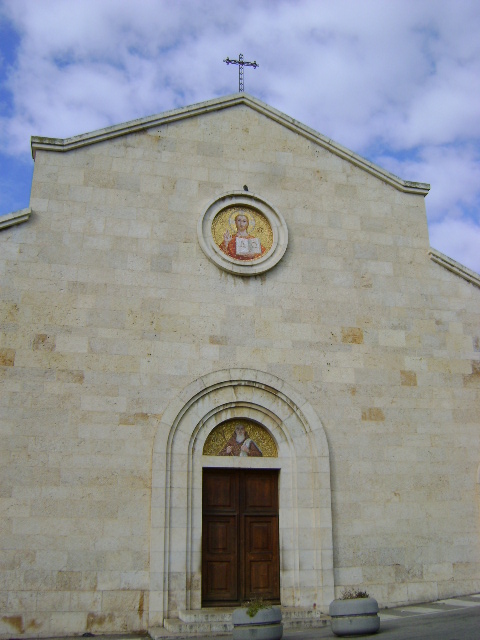The main convent of the Sardinian Capuchin friars, the place of residence of the Provincial Father, is built on an ancient pagan site on the hill of Buoncammino. Under the convent there are the famous Punic caves transformed by the Romans into stone quarries to build the amphitheatre, to which they are connected by an underground tunnel. Recent findings have highlighted a graffiti of exceptional importance for the presence of Christian martyrs in the caves and for the dating of the evangelization of Sardinia. In the sec. XVII the Capuchin friars had used the convent as a hospital and buried the victims of the plague in the caves. The convent was therefore founded on the place of sacrifice of the first Christian martyrs and on the places of heroic charity of the first Capuchin friars. The convent, also called the Convento Maggiore, was built on 11 October 1591. A small group of the Capuchin reform in 1525 arrived in Sardinia, headed by p. Zefferino from Bergamo, sent to found the Capuchin Province of Sardinia. The convent and the church are dedicated to S. Antonio of Padua. Today's appellation of "Church of S. Ignazio" is quite recent, due to the permanence and death of Fra 'Ignazio da Laconi (1701 - 1781) in this convent; but it is mainly following the Beatification (1940) and the Sanctification (1951) of St. Ignatius that the convent is so familiarly called by the people. The convent was born as a place of prayer and penance, a place of evangelization, with popular preachers, and of welcoming the poor: the Capuchin friars served a hot dish, "the soup of the poor", every day, to all those who came to the convent door.
Convento di Sant'Ignazio
Convento di Sant'Ignazio
Viale S. Ignazio da Laconi, 94
City
CagliariAdd new review
Your review will be visible after approval by the editors
To post a review you must be an authenticated user.
Log in with Social Login
